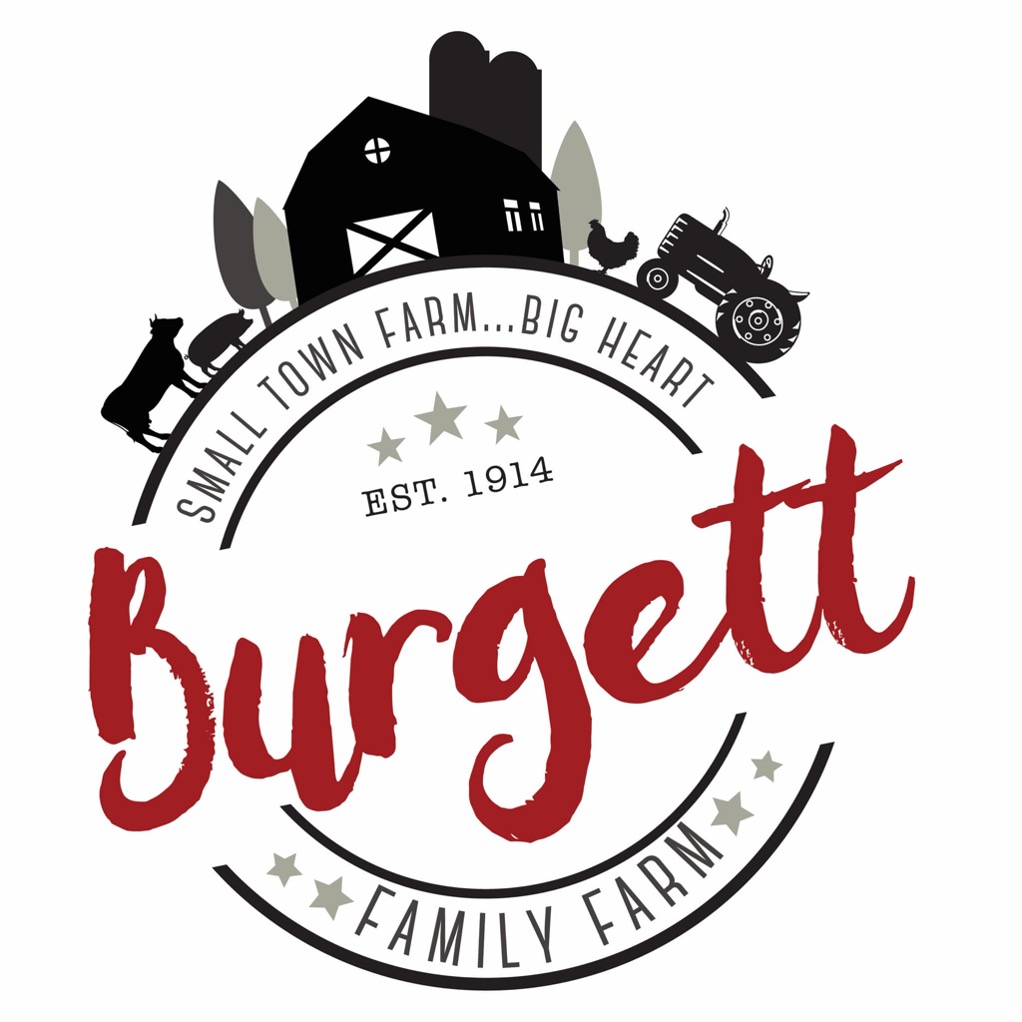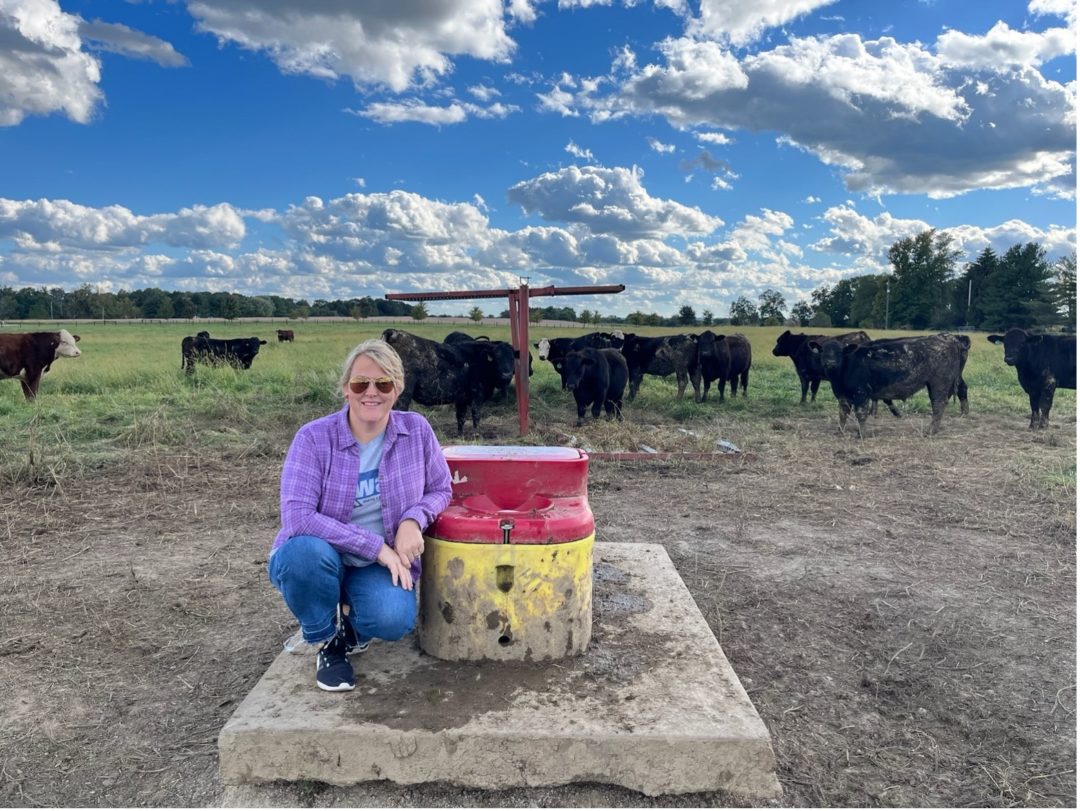TRAFALGAR, Ind. - Six years ago, Thomas Burgett, a third generation farmer and a sergeant with the Indiana State Police, noticed that the 100-year-old family farm was struggling financially and experiencing significant soil erosion and fertility issues. This directly affected the rate of gain within the cattle herd, so a family decision was made to switch to rotational grazing in an effort to practice more regenerative agricultural methods. The results have boosted the productivity and sustainability of the land and the animals while providing a new path forward for the Burgett Farm.
Over the six-year period, the Burgetts have installed over 28,000 feet of fencing and dug 6,000 feet of water lines on the 80 acre farm. Burgett also leases additional acreage for pasture and hay. The entire beef cattle operation is set up to optimize a direct-to-consumer market and build long-lasting relationships with local and regional customers. Located just 20 miles south of Indianapolis, Burgett Farm is in an ideal location to build a customer base with metro area farm-to-table restaurants.
Burgett Farm Offers Consumers Both Grain-Finished and 100% Grass-Fed Only Options
“We have always raised grain-fed beef on the farm, but over the past three years, we have been expanding our 100% grass-fed herd,” said Burgett. “Last year, we processed six grass-fed whole beefs, and in 2022, we will be harvesting 28 calves this October and November. I really like that we have more control over input costs with grass-fed beef. The volatility of grain prices can make forward pricing a grain-fed custom beef a challenge; customers just want a bottom line number, and we need to make sure we are covering our costs.”
According to the April 2017 independent report titled “Back to Grass: The Market Potential for U.S. Grassfed Beef,” the grass-fed beef market is estimated to be $4 billion in retail and food services sales. This represents just 4% of the total U.S. beef market. There are an estimated 3,900 producers finishing an estimated 232,000 head of grass-fed cattle today. Nineteen percent of these producers are small-scale producers, like the Burgetts, who sell directly to consumers.
Burgett Farm also annually produces 40 SimAngus cross grain-fed custom beef halves and wholes. The majority of sales and new customers happen through the Burgett Farm Facebook page and website. Burgett’s wife, Benni, and daughter Ella are active on all social media platforms producing light-hearted content to promote the farm business.
“We probably spend on average about two hours talking and interacting with a potential customer before they are ready to order from us,” said Burgett. “We explain how we raise the cattle and walk them through the process. We offer to let them come visit the farm and see how the cattle are cared for. There are two big hurdles we have to overcome. One is that most people are worried about having enough space to store a whole or half beef. The second is the overall cost. Even if they are used to buying bulk at like a Sam’s Club, they can be hesitant when buying hundreds of pounds of beef. They might be concerned that they won’t eat all the beef in a year, but our repeat customers know that they end up eating more beef than they thought. The recent pandemic and supply chain issues have shown customers that there is a benefit to having a large supply of food on hand. It does seem like more people are interested in knowing where their food comes from.”
 Cow and calf on one of the many grazing paddocks at Burgett Farm. Burgett Farm
Cow and calf on one of the many grazing paddocks at Burgett Farm. Burgett Farm
Rotational Grazing Improves the Sustainability of the Farm
Rotational grazing doesn’t have to be complicated. Each farm or pasture can present unique challenges, but it boils down to the producer being observant and responsive to the performance of the cattle on the grass. Through his experience, Burgett has determined that three days is the optimal amount of grazing time per paddock on his farm to achieve the proper grass height. The benefits of the rotational grazing program are easy to spot in the herd.
“We have almost eliminated our need to deworm our cattle,” said Burgett. “The 100% grass-fed cattle actually do not have any dewormers or pour on. We are breaking the life cycle of most parasites, and they can’t get a foothold. Compared to our previous continuous grazing program, the rotational grazers have a higher fertility rate at the end of the growing season. The other big benefit is moving the cattle routinely makes them more active, more likely to graze longer and gives me the opportunity to look at each animal and spot any health issues quicker. We will prepare a paddock the day before, drop a wire on the next day and the cattle are ready to go. There’s no calling them or driving them; they adapt very quickly to being moved.”
Burgett has been utilizing Red Angus and Simmental cross cattle to produce the 100% grass-fed beef. Looking to the future, Burgett has researched cattle breeds that perform best on grass and is planning on adding a South Poll bull to the herd. The South Poll breed was established in the 1980s as a maternal composite, combining Angus, Hereford, Senepol and Barzona breeds. South Poll cattle are bred to be heat-tolerant, slick-haired, small-framed cows, with an emphasis placed on efficiency, high fertility, longevity and calm disposition.
“The biggest difference is that the South Poll cattle finish out at 1,000 pounds, compared to over 1,200 with the SimAngus,” said Burgett. “We are still compiling statistics on our grass-fed cattle here, but it seems like they have an average daily rate of gain that is roughly 2 pounds on grass. Adding the South Poll breed we hope will increase the average daily rate our grass fed calves are finishing out at 18 to 22 months. We’ve had some calves that really excelled and finished out in 14-15 months. The other big difference is that these cattle are grazing, not laying in the shade, during 90-degree hot, humid weather. They are converting that grass to lean protein in a highly efficient manner.”
Bringing Water to Where the Cattle Are, Maximizing Rate of Gain
Installing automatic waterers for all the grazing paddocks was a major investment on the Burgett Farm that was made possible with the USDA Natural Resources Conservation Service (NRCS) Environmental Quality Incentives Program (EQIP) cost-share funds. Providing fresh, clean water on demand in the paddocks helps keep the cattle healthy and content. Automatic waterers like Ritchie are installed in locations so that the cattle are never more than 900 feet away from a waterer, which maximizes the daily rate of gain. Automatic waterers have a smaller footprint than large, galvanized tanks. Installed as freestanding or inline, automatic waterers have a small drinking bowl that keeps the water fresh, reduces water waste and keeps the area cleaner and drier.
“I can tell you that a good part of my childhood consisted of standing next to a 1,000 gallon tank filling it with a garden hose,” remarked Burgett. “We had only two places on the farm where the cattle drank, and they both turned into giant mud holes. You had to watch the hose; you couldn’t leave it unattended in case it fell out or you accidentally left it running all night, which happened quite a few times. In my opinion, one of the biggest values of an automatic waterer is freeing up your time and applying those hours on becoming a better herdsman and actually being out with your herd. I also like the fact that the Ritchie waterers give us peace of mind in the cold-weather environment. It may cost a little more upfront to install good-quality waterers, but you will get it back tenfold in terms of your time and productivity.”
Regenerative Agriculture for Generations to Come
Investing in better land and resource management practices has reinvigorated the family farm. The learning process is ongoing, but the Burgett family are proud of their results.
“Taking our land back to a pasture base and utilizing rotational grazing has given us much better soil health, filtration and less runoff,” said Burgett. “You can see it in the clarity of the water in the creeks that run throughout the farm. Even in a dry year like this year, our pastures remain as green as they were in the spring. We hope to continue to grow our grass-fed beef market, and we really want more people to take more of an interest in what they are eating and learn how farmers are raising their food in a responsible manner.”
 Burgett Farm
Burgett Farm
For more information, visit:
Ritchie Industries | RitchieFount.com
Burgett Farm | Burgett Family Farm | Facebook | www.BurgettFarm.com
South Poll Grass Cattle Association | South Poll
“Back to Grass: The Market Potential for U.S. Grassfed Beef” Report | Grassfed_Full_v2.pdf (stonebarnscenter.org)






